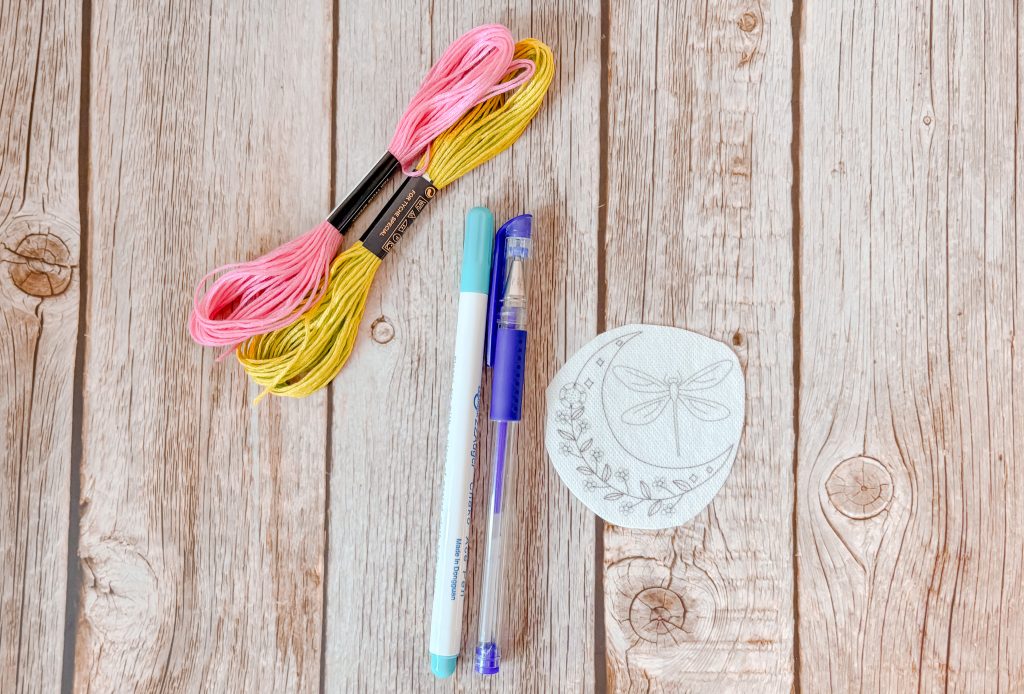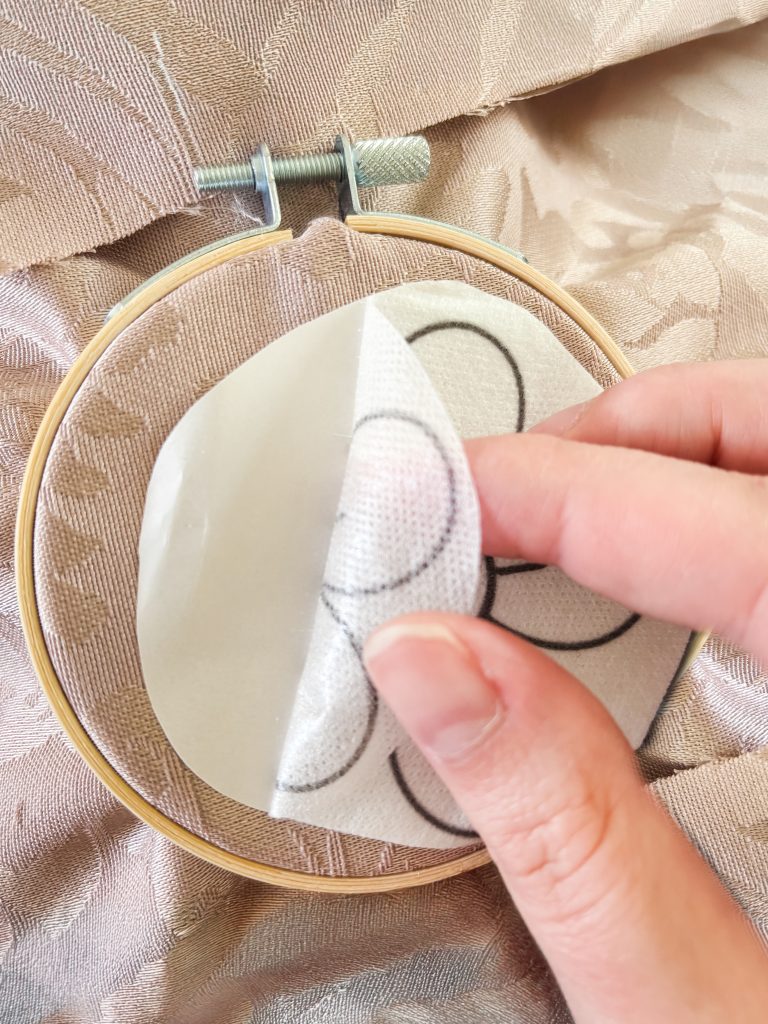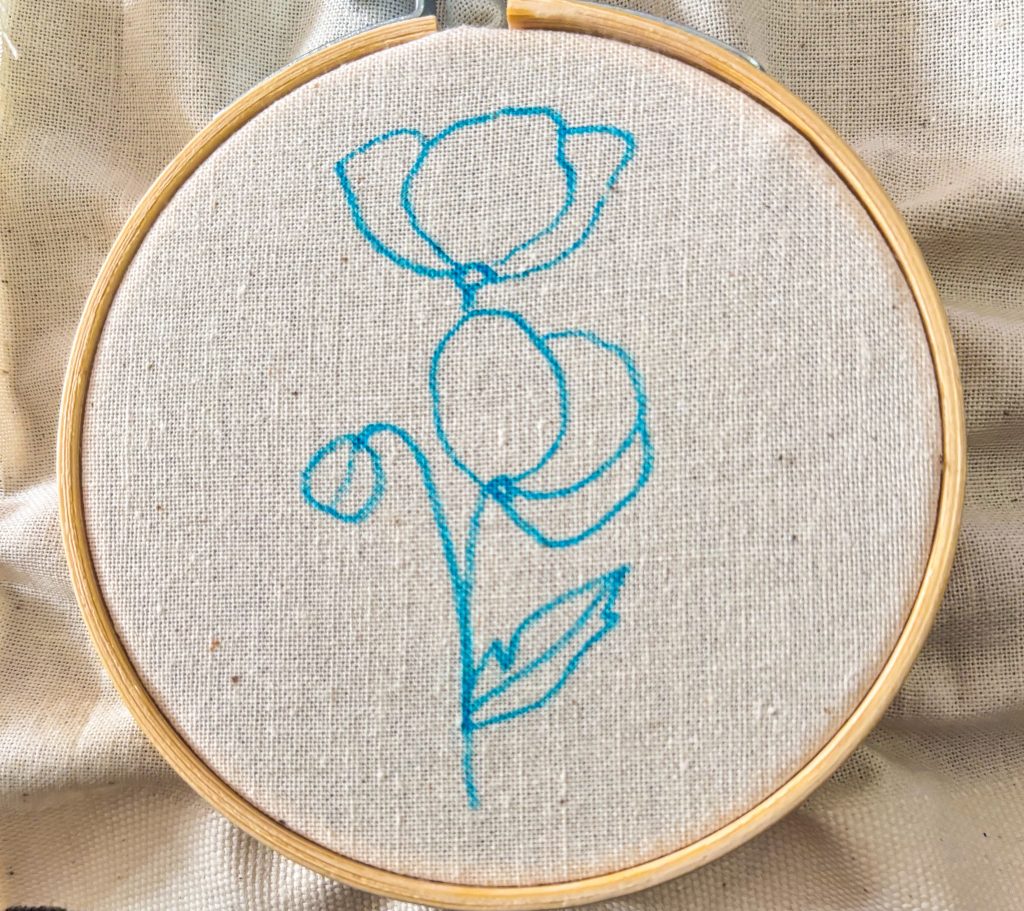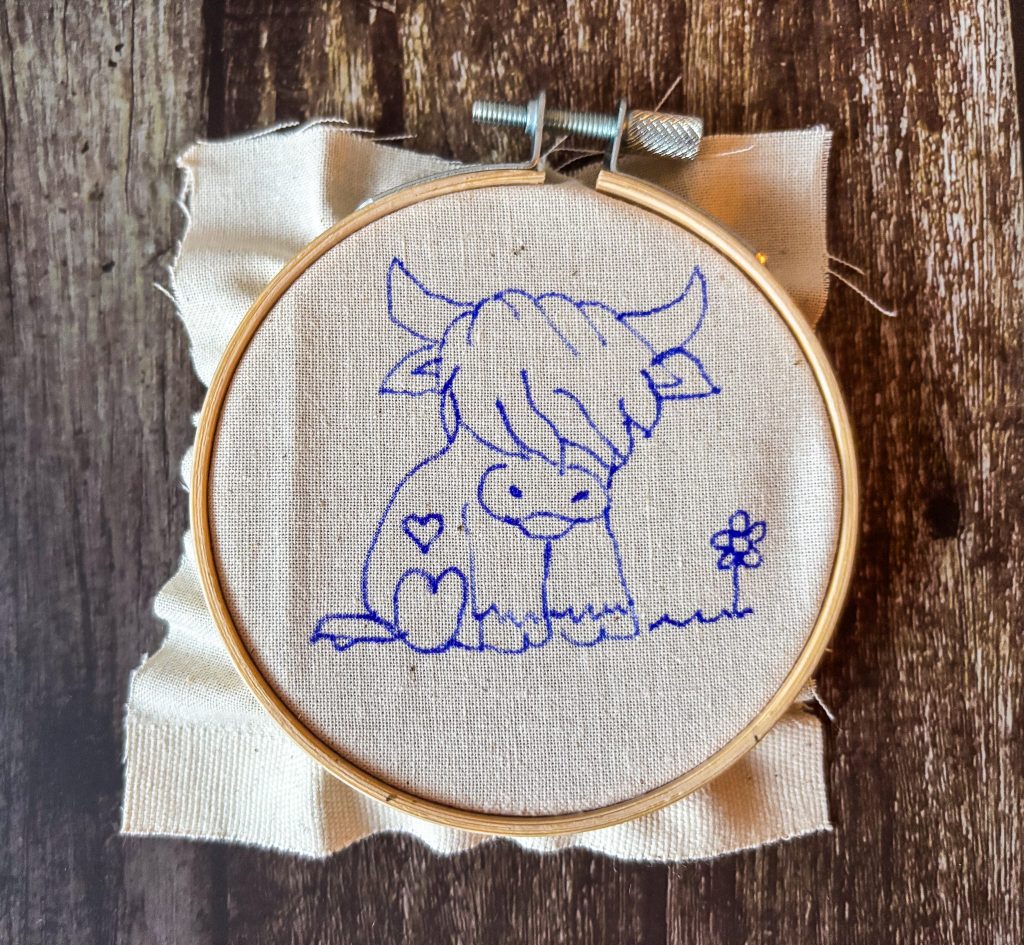
Transferring your embroidery design onto fabric is the first step in bringing your stitches to life—and there are several methods that can make this process easier, cleaner, and even more enjoyable. Whether you’re a beginner or a seasoned stitcher looking to try something new, here are three simple and effective options to consider:
1. Stick and Stitch (Pre-Printed Stabiliser)
If you’re not a fan of tracing or just want a no-fuss solution, stick and stitch embroidery designs might become your new favourite.

What is it?
Stick and stitch is a pre-printed, water-soluble stabiliser that you peel, stick onto your fabric, stitch through, and then rinse away once you’re done. You can buy premade designs or print your own using printable stabiliser sheets.
👉 You can find a lovely selection of premade stick and stitch designs in my Etsy shop—perfect for beginners or those wanting a quick-start project.
Pros:
- Super easy—no tracing required
- Works well on thicker or darker fabrics
- Great for complex or detailed designs
- Rinses away cleanly with warm water
Cons:
- Slightly more expensive than other methods
- Adds a temporary layer that may affect how it feels to stitch through
Best for: Beginners, intricate designs, and dark fabrics
2. Water-Soluble Pens
For those who like more control and don’t mind tracing, water-soluble pens are a tried-and-tested option.

What is it?
These pens use water-activated ink that disappears with a dab of water. You simply trace or freehand your design directly onto the fabric, stitch over it, and then rinse away any remaining lines.
Pros:
- Inexpensive and widely available
- Easy to correct mistakes with a little water
- Doesn’t interfere with your stitching
Cons:
- Lines can fade too early if exposed to moisture
- Not ideal for humid environments
Best for: Light-coloured fabrics and freehand drawing
3. Heat-Disappearing Pens
If you want crisp, clear lines and plan to iron your finished piece, heat-disappearing pens are a modern miracle.

What is it?
These pens (often repurposed from the stationery aisle) use thermo-sensitive ink that disappears when heat is applied—typically with a quick pass of an iron.
Pros:
- Very precise and smooth lines
- Stays visible while you work
- Disappears instantly with heat—very satisfying!
Cons:
- Ink may reappear in cold temperatures (though rarely)
- Some fabrics can retain faint lines, so always test first
Best for: Detailed work, clear outlines, and controlled environments
So, Which One Should You Use?
Each method has its advantages, and the best choice often depends on your fabric, the complexity of your embroidery design, and personal preference. Want the easiest route? Go for stick and stitch. Love to sketch? Grab a water-soluble pen. Need crisp lines that vanish with heat? The heat pen’s your friend.
Whichever method you choose, the right transfer technique will set the stage for beautiful stitching ahead. Happy embroidering!